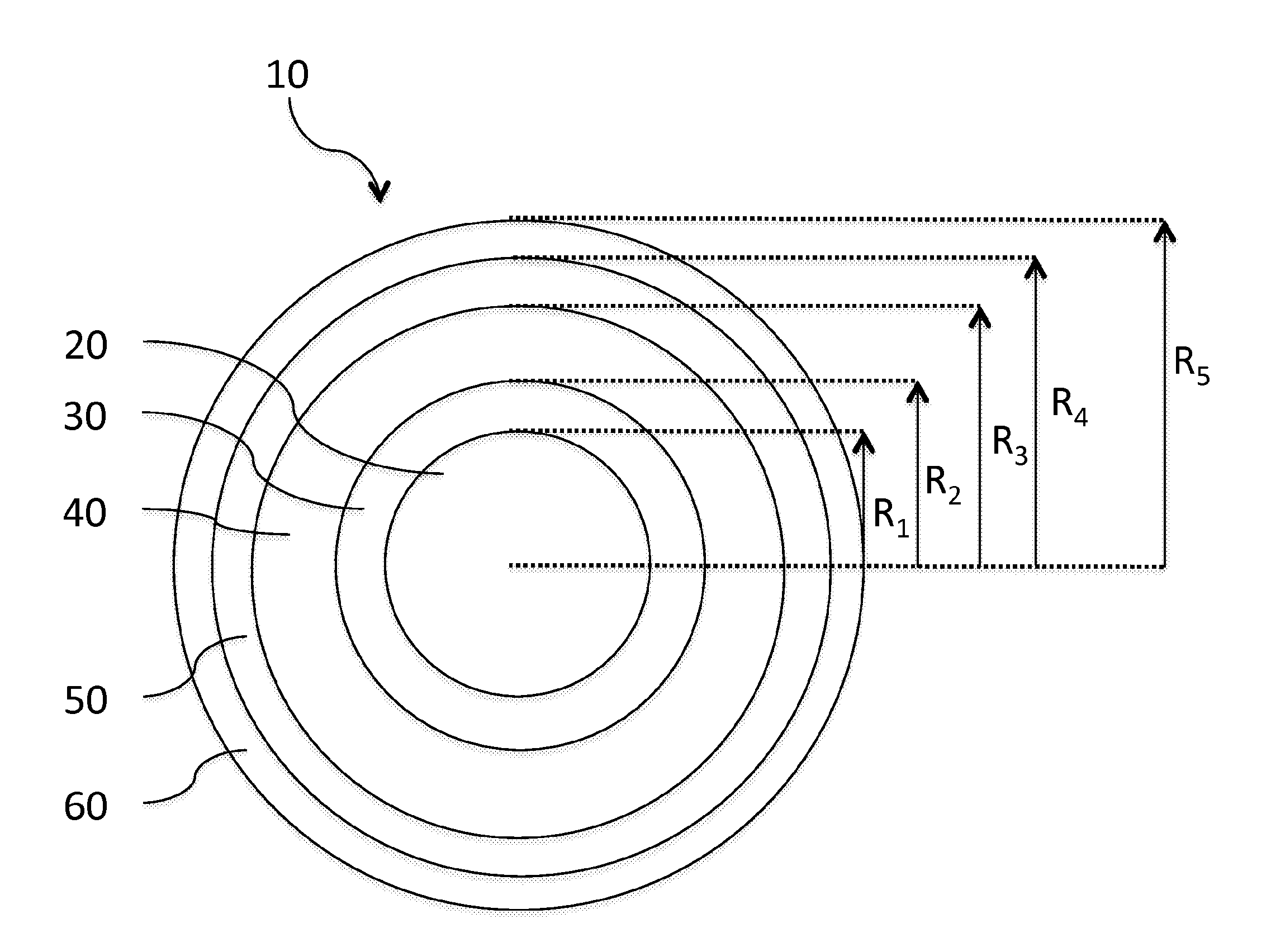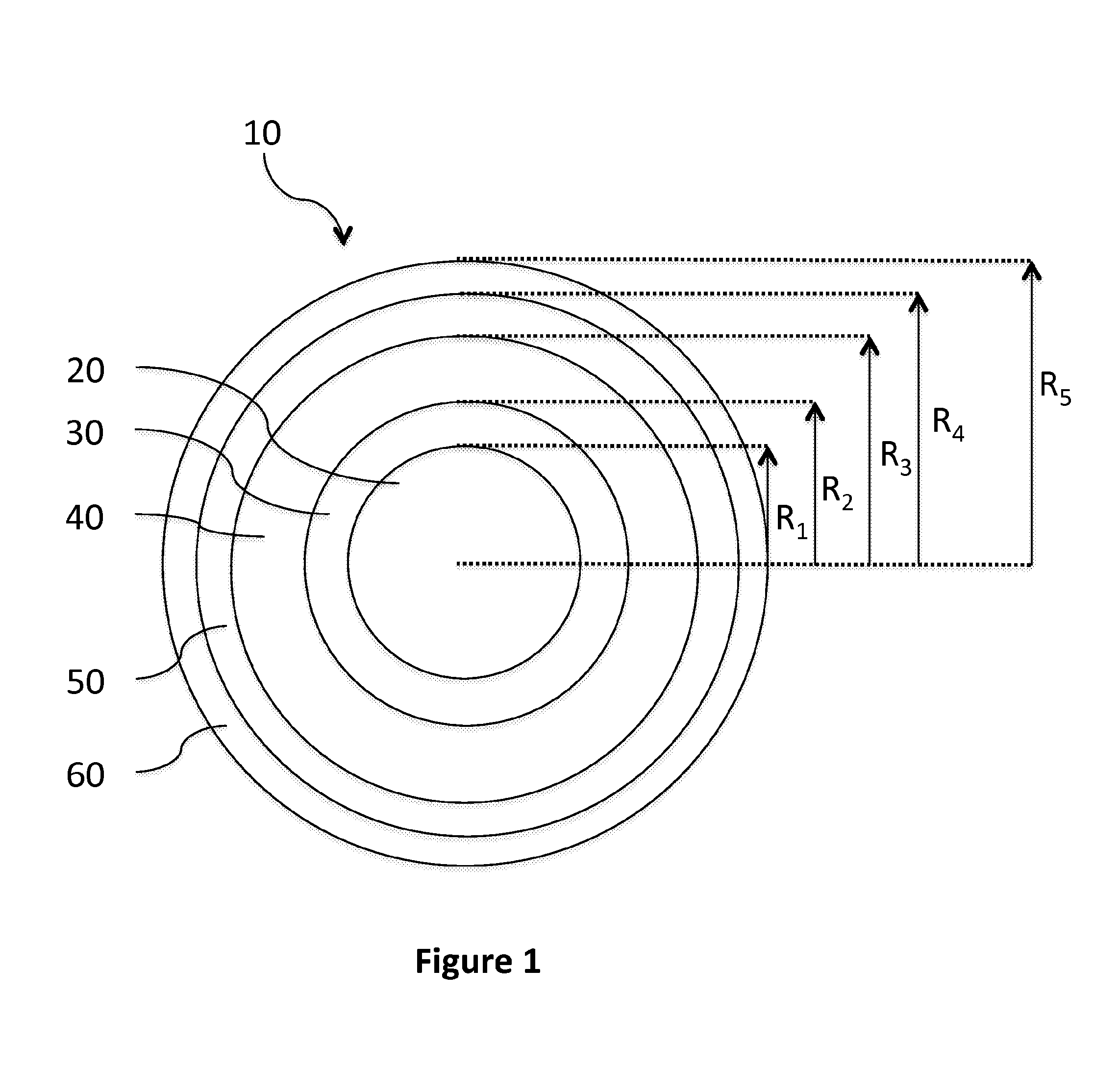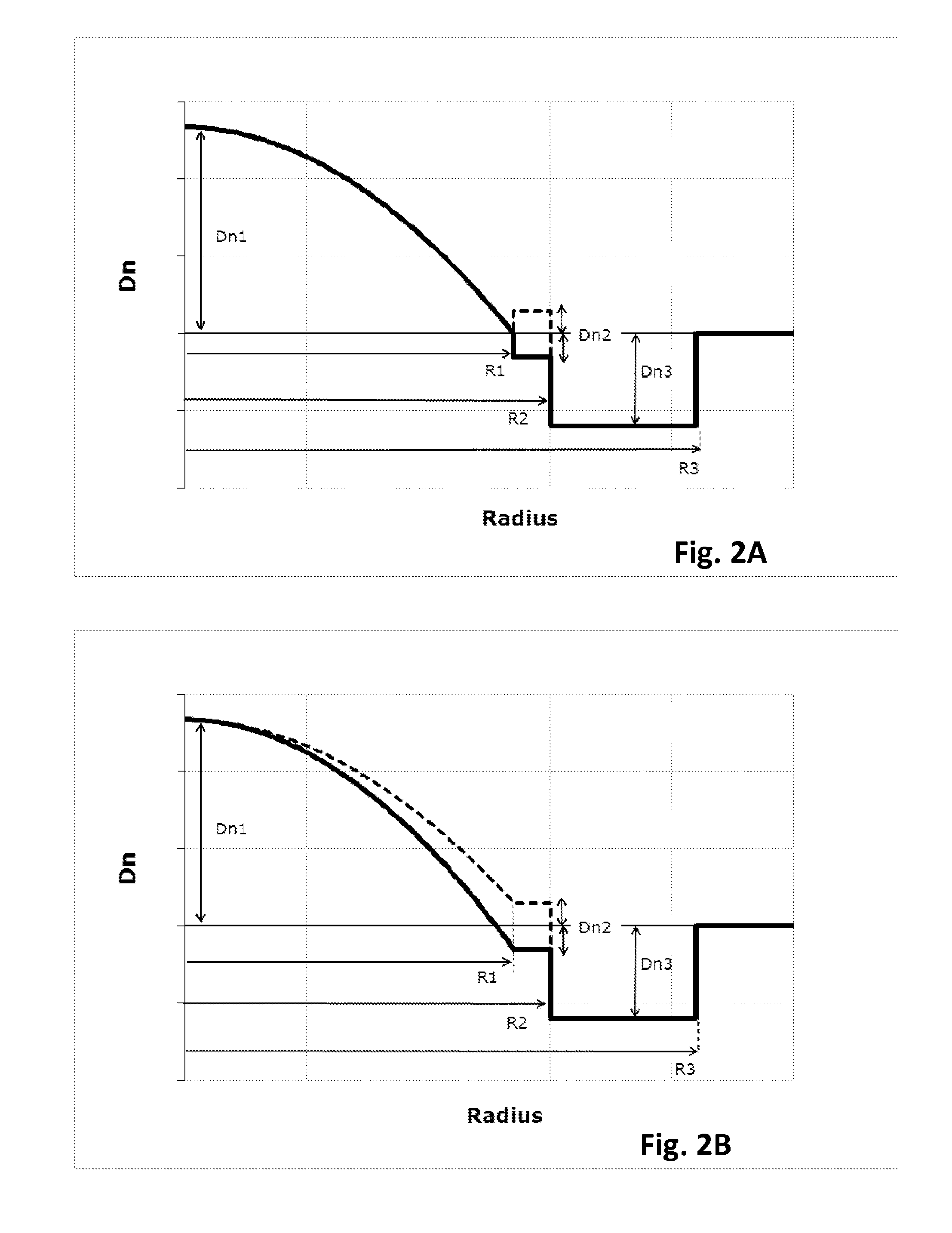Few mode optical fibers for space division multiplexing
a technology of space division multiplexing and fiber optic fibers, applied in fiber transmission, electromagnetic transmission, transmission, etc., can solve the problems of reducing reducing the reach of the transmission system, and causing limits in the transmission system, so as to reduce the differential mode group delay and reduce the bend loss. , the effect of low leakage loss
- Summary
- Abstract
- Description
- Claims
- Application Information
AI Technical Summary
Benefits of technology
Problems solved by technology
Method used
Image
Examples
first embodiment
[0071]FIG. 2A depicts the refractive index profile n(r) of optical fiber 10 according to the invention. It describes the relationship between the refractive index value n and the distance r from the center of the optical fiber. The x-axis represents radial position with x=0 representing the center of the core region, and the y-axis represents refractive index, expressed as an index difference Dn unless otherwise stated.
[0072]In that first embodiment, the optical fiber 10 has an optical core 20 having a refractive index profile n(r) defined as follows:
n(r)=n0·1-2·Δ·(rR1)αr≤R1
where:
r is a variable representative of the radius of the optical fiber,
R1 is the optical core radius,
Δ is the normalized refractive index difference, with
Δ=n02-n122n02
n1 is the minimal refractive index of the optical core,
n0 is the maximal refractive index of the optical core,
α is a non-dimensional parameter that defines the index profile shape of the optical core.
[0073]The alpha refractive index profile of the ...
third embodiment
[0086]FIG. 2C depicts the refractive index profile n(r) of an optical fiber according to the invention.
[0087]In this third embodiment, the inner cladding layer 30 is an extension of the graded index core 20, such that both the optical core 20 and the inner cladding layer 30 have a refractive index profile n(r) defined as follows:
n(r)=n0·1-2·Δ·(rR2)αr≤R2
where:
r is a variable representative of the radius of the optical fiber,
R2 is the outer radius of the inner cladding layer 30,
Δ is the normalized refractive index difference, with
Δ=n02-n122n02
n1 is the minimal refractive index of the inner cladding layer (i.e. the refractive index at radius R2),
n0 is the maximal refractive index of the optical core,
α is a non-dimensional parameter that defines the index profile shape of both the optical core and the inner cladding layer.
[0088]Hence, in this third embodiment, the term “single-α graded-index profile” has a slightly different meaning as compared to the first two embodiments, since this g...
second embodiment
[0111]FIG. 5 illustrates the evolution of Max|DMGD| as a function of wavelength for few-mode fibers supporting from 6 to 16 LP guided modes. More precisely, FIG. 5 shows the Max|DMGD| as a function of wavelength for Ex. 2, 5, 6 & 9 listed in Table 1. Such examples correspond to few-mode fiber according to the invention, as depicted in FIG. 2B.
[0112]The x-axis depicts the wavelength of the light guided by the fiber, ranging from 1530 to 1570 nm. The y-axis depicts the Max|DMGD| between any two LP guided modes, expressed as ps / km and ranging from 0 to 200. Curve 51 corresponds to the FMF guiding 6 LP modes of Example 2; curve 52 corresponds to the FMF guiding 9 LP modes of Example 5; curve 53 corresponds to the FMF guiding 12 LP modes of Example 6, while curve 54 corresponds to the FMF guiding 16 LP modes of Example 9.
[0113]As can be seen, the Max|DMGD| remains low in the entire extended C-band from 1530 to 1570 nm. The Max|DMGD| slope in this extended C-band is in absolute value <3 p...
PUM
 Login to View More
Login to View More Abstract
Description
Claims
Application Information
 Login to View More
Login to View More - R&D
- Intellectual Property
- Life Sciences
- Materials
- Tech Scout
- Unparalleled Data Quality
- Higher Quality Content
- 60% Fewer Hallucinations
Browse by: Latest US Patents, China's latest patents, Technical Efficacy Thesaurus, Application Domain, Technology Topic, Popular Technical Reports.
© 2025 PatSnap. All rights reserved.Legal|Privacy policy|Modern Slavery Act Transparency Statement|Sitemap|About US| Contact US: help@patsnap.com



